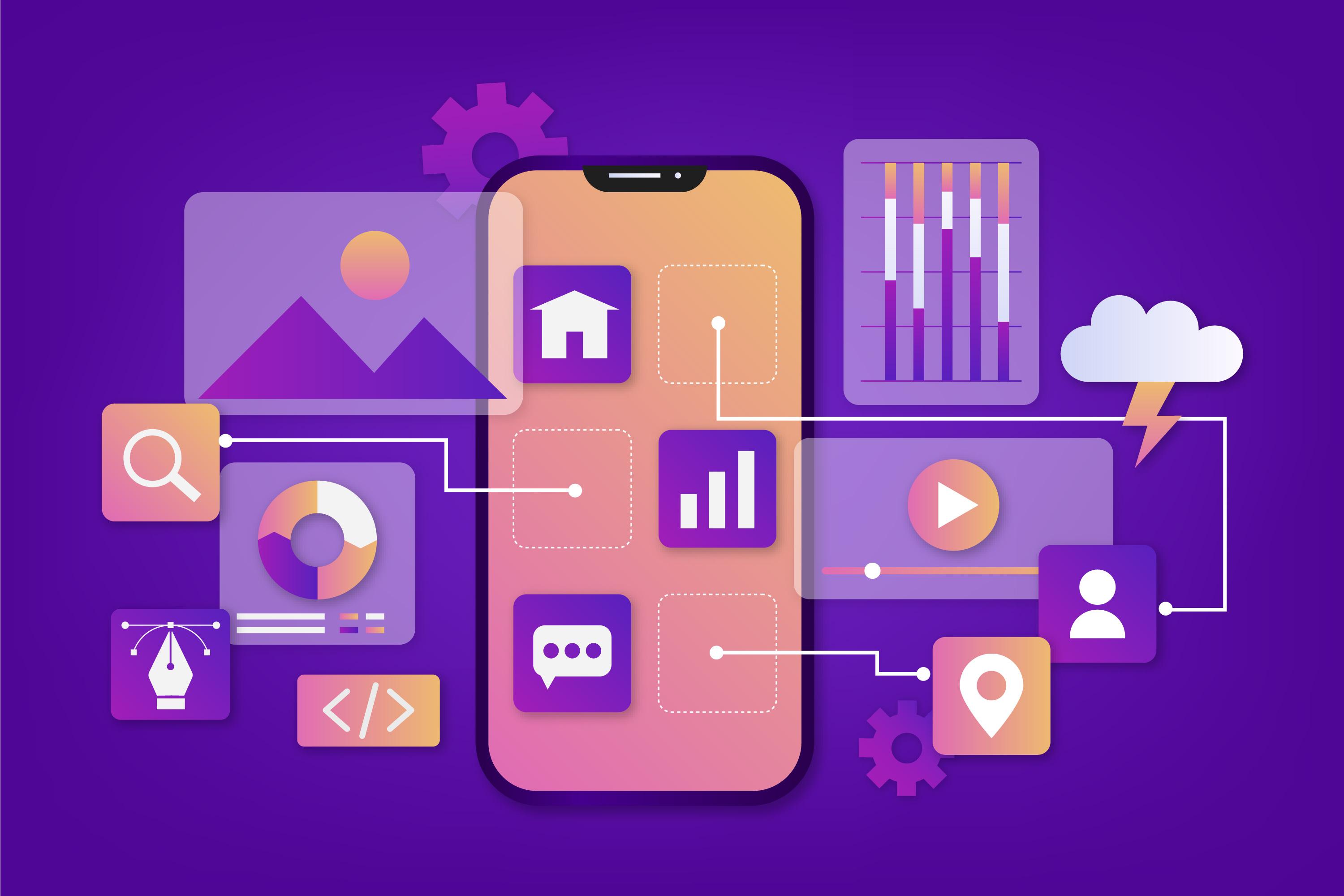- Posted On: 21 Jun 2024
- Posted By: goalbridge
Top 10 Trends in Web and Mobile Application Development
The world of web and mobile application development is constantly evolving, driven by advancements in technology and changing user expectations. Staying ahead of these trends is crucial for businesses looking to create impactful and innovative applications. Here are some of the top trends currently shaping the industry:
1. Progressive Web Apps (PWAs)
Progressive Web Apps combine the best of web and mobile apps, offering a seamless user experience that is fast, reliable, and engaging. They load quickly, even in uncertain network conditions, and provide a native app-like experience directly from the browser. With the ability to work offline and send push notifications, PWAs are becoming a popular choice for businesses aiming to enhance user engagement.
2. Artificial Intelligence and Machine Learning
AI and machine learning are transforming app development by enabling more personalized and intelligent user experiences. From chatbots and virtual assistants to predictive analytics and personalized recommendations, integrating AI can significantly enhance the functionality and user satisfaction of web and mobile applications.
3. Internet of Things (IoT)
The Internet of Things is expanding the scope of web and mobile apps by enabling them to interact with a network of interconnected devices. This trend is particularly prominent in sectors such as healthcare, smart homes, and industrial automation, where apps can monitor and control devices, collect data, and provide real-time insights.
4. Augmented Reality (AR) and Virtual Reality (VR)
AR and VR are no longer just for gaming. These technologies are being integrated into apps across various industries, from retail (virtual try-ons) to real estate (virtual property tours) and education (interactive learning experiences). AR and VR provide immersive experiences that can enhance user engagement and satisfaction.
5. Blockchain Technology
Blockchain is revolutionizing app development, especially in areas requiring high security and transparency, such as finance, supply chain management, and healthcare. Blockchain enables secure transactions, data integrity, and decentralized applications (DApps), which can provide users with greater control and trust.
6. 5G Technology
The rollout of 5G technology is set to dramatically improve the speed and responsiveness of mobile applications. With lower latency and higher bandwidth, 5G enables more complex and data-intensive applications, such as HD video streaming, real-time gaming, and advanced AR/VR experiences, to perform seamlessly.
7. Cross-Platform Development
Cross-platform development frameworks like React Native, Flutter, and Xamarin are gaining popularity as they allow developers to write code once and deploy it across multiple platforms. This approach not only saves time and resources but also ensures a consistent user experience across devices.
8. Enhanced Security Measures
As cyber threats become more sophisticated, ensuring the security of web and mobile applications is more critical than ever. Implementing robust security measures, such as end-to-end encryption, biometric authentication, and secure APIs, is essential to protect user data and build trust.
9. Voice Search and Voice-Activated Assistants
Voice search and voice-activated assistants, such as Siri, Alexa, and Google Assistant, are changing how users interact with applications. Integrating voice recognition technology into apps can provide a hands-free, intuitive user experience, making it easier for users to perform tasks and access information.
10. Cloud-Based Applications
Cloud computing continues to play a significant role in app development, offering scalability, flexibility, and cost-efficiency. Cloud-based applications can handle large volumes of data, provide seamless updates, and enable remote access, making them an ideal choice for businesses of all sizes.
Conclusion
Keeping up with these trends in web and mobile application development can help businesses stay competitive and meet the evolving needs of their users. By embracing these innovations, companies can create more engaging, efficient, and secure applications that drive user satisfaction and business growth.



